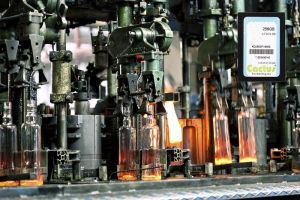Industrial 2.5” SATA Solid State Drive (SSD) Solutions
 Over the past several years there has been a migration from Hard Disk Drives (HDD) to Solid State Drives (SSD). The added SSD advantages of performance, power and environmental specifications have proven to outweigh their additional cost in many applications.The ease of interchangeability of SSD for HDD, has made the switch happen without much thought. Just go online, buy a mainstream SSD at a great price and plug it into your design. It’s happening every day.
Over the past several years there has been a migration from Hard Disk Drives (HDD) to Solid State Drives (SSD). The added SSD advantages of performance, power and environmental specifications have proven to outweigh their additional cost in many applications.The ease of interchangeability of SSD for HDD, has made the switch happen without much thought. Just go online, buy a mainstream SSD at a great price and plug it into your design. It’s happening every day.
What goes unnoticed is what’s inside the SSD and what the real specifications are. With HDD, you basically needed to look at form factor (physical size) and capacity. Maybe one was a little faster here or there, but they all had similar shock, vibration and power specs.
For SSD, there are a three major choices. They all look the same from the outside and are installed the same. But, they have widely differing specifications when it comes to their reliability. In fact, a wrong selection may not be recognized for a several months before issues begin. You need to understand what does a solid state drive do.
Three Types of SATA SSD:
Consumer SATA SSD - Based on MLC/TLC NAND
Consumer SSD are built for cost and performance. The lowest cost memory is used in products with short life cycles. Systems such as personal notebooks and desktops are the primary users of these type of SSD, but they do find their way into Industrial Embedded applications.
They use NAND memory having a raw endurance rate of 200 - 3000 write/erase cycles per block. These parts should not be used in any environment having high write cycles or subject to wide temperature extremes.
Commercial and Enterprise SATA SSD - Based on eMLC/MLC NAND
The vast majority of the SSDs on the market today are built with MLC NAND. Many are used in consumer applications. The eMLC NAND is used in Enterprise SSDs for applications such as servers in data centers requiring additional endurance at the expense of performance.
For applications with high write usage models or with the need to operate at the extreme temperature ranges in the -45C to 90C ranges, the eMLC/MLC NAND is not sufficient. The raw NAND endurance of 3000 - 30,000 write/erase cycles per block is limiting and temperature extremes are not handled well.
Industrial Grade SATA SSD - Based on SLC NAND
Industrial Grade SATA SSD are the best of breed and they come with an associated price point. They are built using only SLC NAND flash with high raw endurance cycles of 70,000 write/erases/block. In addition to endurance, they are available with extended operating temperature ranges of -45C to 90C.
If you are designing for an environment which requires 100% uptime, high write cycles or wide operating temperatures, an Industrial Grade SSD is the right choice. In addition to these characteristics, a good supplier will offer long life cycles without any changes to the Bill-Of-Material (i.e. the components and firmware making up the SSD do not change).
If you have more questions, please talk to a Cactus Expert.






